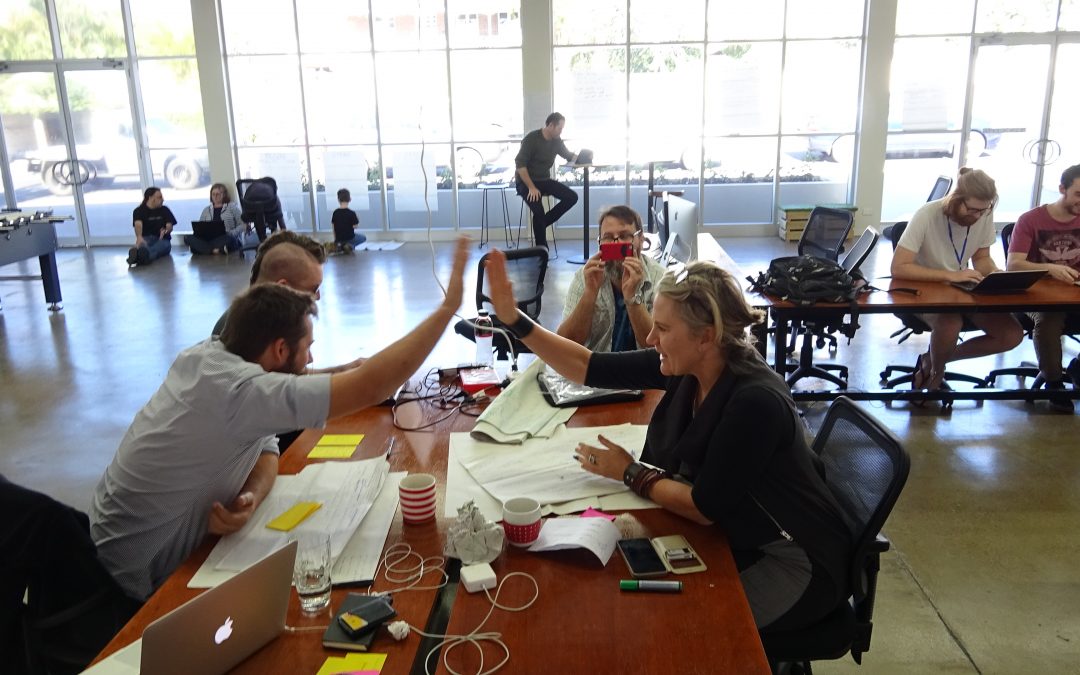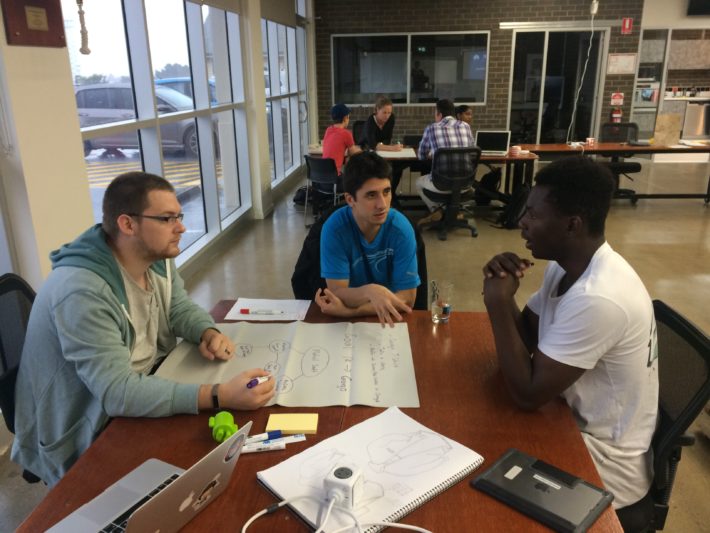Hackathon criteria
I had the opportunity today to respond to a request to facilitate a series of hackathon style events. The process provided an opportunity to reflect on what goes into the event, what makes them work, and what would make an ideal event.
I have been involved in hackathons since my first encounter with Random Hacks of Kindness in 2015. I caught the bug and joined the program’s steering committee, eventually bringing the brand to the Ipswich Fire Station 101 innovation hub I managed at the time. Other similar events I have run include GovHack, bespoke corporate events spanning one to three days, and similar events in an MC capacity for larger conferences of 100+ delegates.
Even as late as 2015, hackathons were a fairly new concept. Random Hacks of Kindness was one of the few dedicated social impact programs. Since then, the movement has become more organised. Angela Bee Chan has done an exceptional job with establishing the national Hackathons Australia, the Techstars Startup Weekend brand provides some rigour to facilitation, and the hack event has become a solid product offering for the growing ranks of innovation hubs.
Reflections

Here are some thoughts on all things hackathons:
Elements of a good hack
The formula for a hackthon is straight forward. There is value in understanding what is happening for people from a psychological and social science perspective:
- Create a novel environment to open new neural pathways
- A space that is both safe to build trust and pushes people out of their comfort zone, creating community
- Meet people’s hygiene factors of food and rest without making them too comfortable by giving them a big goal
- Focus attention on solving a common goal to lower self-conscious barriers and take their eyes of themselves
- A minimal degree of competitiveness with an emphasis on personal betterment over beating others
Energy in the room
These outcomes are the goal of the team, and primarily the role of the facilitator. The role of the facilitator is to help participant’s get the most out of the event. Half the energy in the room comes from the facilitator, the other half from participants. Make it too comfortable or too challenging, the energy drops. It is a constant read to push the teams or give them space, to monitor which mentors are adding value and which ones may not be a match for a team, to know when to pump the tunes and when to mellow things out.
What’s in a name
The term hackathon can be off putting to some, particularly in regional areas. While it can be novel, other terms such as ideas jam or ideation weekend have bee used. I don’t have an answer for this and generally aim to get people used to the term, but a new term needs to be used that is relevant to the audience if language creates a barrier to the outcomes.
Planning
The main event is the culmination of a significant amount of planning. A significant contributor to a successful weekend is the clarity and attractiveness of the challenge. Working with key stakeholders is key to frame the challenge of the weekend to ensure it is broad enough to attract a wide audience, open to allow creativity of responses, and specific enough to give participants something tangible to work on.
Part of the forming of the challenge is to identify the resources that will be available to the teams. This includes access to mentors, data, judges, and infrastructure that participants would otherwise not have available. Included in the approach is an ideation night, which tests assumptions, educates the community, gauges community interest, and allows for initial forming of local teams prior to the main event.
Deliverables from the ideation stage includes:
- Defined challenge statement(s)
- Resource identification (mentors, data)
- Ideation night
- Communication strategy and stakeholder engagement plan
Event
Several options are available for the main event, including:
- Single full day
- Evening plus full day
- Friday evening, Saturday, Sunday
The structure of the event will be based on the audience and available resources. The format for each structure is similar, to include:
- Ideation and team forming
- Master classes to educate on business model and pitching principles and specific technical details around the challenge statement
- Solution development supported by mentoring
- Team check-ins
- Pitch preparation
- Final presentation and judging
- Networking
Follow up
The follow-up engagement with teams is critical to the success of the program in the community. Intensive sessions create bonds and form ideas that would otherwise not be possible. Through the judging process, promising ideas can be taken further through a semi-structured support program that provides access to mentors and resources. These new ideas can be further developed to provide a pathway for customer revenue. A recommended follow-up period is between three to six months after the main event.
Schedule

We often referred to the process of “spinning up” a hackathon. Unless the participants are already primed or it is a closed, internal session, an event needs about 6 weeks in market to generate interest and ensure people’s calendar’s are free. With the growing popularity, it is also recommended to look around at other events to ensure there is limited conflict around the same weekend. That said, hacks on the same weekend are inevitable. There is also the challenge of hackathon fatigue as a region draws from the same pool of participants.
Lessons learned

Having participated and facilitated a few hackathons, here are a few lessons that I am reminded of as I consider what it would look like to run another. Keep in mind that most of my frame of reference is focused on a specific outcome, as compared to a general Startup Weekend style event
- Include follow up
Hackathons have some value in their own right, but I have little interest if it is not supported with follow-up support. A significant investment goes into an event, and to not see ideas supported where possible is a waste. At least have an option to provide a pathway to commercialisation or customer revenue if something of value comes out. This is typically in the form of agreed mentoring by a likely corporate customer and partnering with a local innovation hub that can provide the business support. - Get clear on IP before the event
With increased corporate collaborations and sponsorship, the terms of intellectual property need to be clear up front. Nothing is worse than getting to the end and having debates over intellectual property ownership. - #FounderFirst
Some say the hackathon is enough in itself, that it is about seeding ideas and bringing people together. I am all for a well organised event with a good feed, but I have concern when catering and collateral becomes the focus. My personal emphasis is on connecting a validated idea that solves a real problem with a pathway for potential customer revenue or measured impact. Considering what will provide the best outcome for a founder is a good litmus test for everything involved, from catering, judges, mentors, sponsors, and facilitator. - Facilitator fit
I am self-aware enough to know I am a good facilitator, and that there are times when I am not the right facilitator for every event. There are a half dozen great facilitators in Queensland that I frequently refer to, and I am aware of many more across Australia. It is both an art and a skill, balancing energy in the room and moving people towards a set outcome. Finding the facilitator that will meet the challenge statement and audience is key.
There are many other points I could make, and others with experience could add to these thoughts. Hackathons will continue, and it is my hope that they continue to improve, bring communities together, and focus on challenges that matter.

